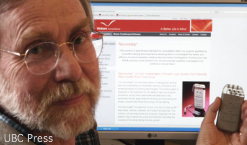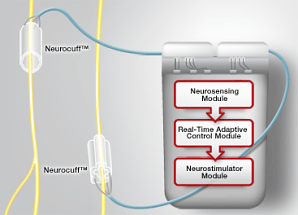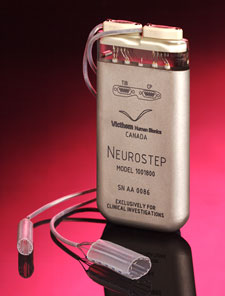
SFU leg-paralysis stimulation, sensing device hits market
By Design Engineering staff
General government funding prosthetics R&DThe Neurostep--a device developed at Simon Fraser University that assists people who have paralysis in one leg to walk--will soon be on the market in Europe and, eventually, in the U.S. and Canada.

That’s satisfying news to Andy Hoffer, the SFU kinesiologist who spent 30 years developing the device aimed at helping those who suffer from limb immobility due to neurological impairment.
The Neurostep is a pacemaker-like device implanted inside the thigh. It uses nerve cuffs to sense and stimulate nerve activity in the paralyzed leg, allowing greater mobility for those suffering from neurological disabilities such as stroke, multiple sclerosis, spinal cord injury or cerebral palsy. It has been engineered to integrate with the body’s natural sensing and stimulation network and designed to closely mimic specific functions that have been interrupted or lost due to disease or injury.
 Hoffer and his team pioneered the design and use of nerve-cuff electrodes and developed specialized amplifiers. He patented assistive-device designs and applications and, in 1997, created an SFU spin-off company, Neurostream Technologies, which was bought by Saint-Augustin-de-Desmaures, Que.-based Victhom Human Bionics in 2004 (which also developed a motorized, processor-controlled lower-limb prosthesis for people amputated above the knee, which Design Engineering profiled last year).
Hoffer and his team pioneered the design and use of nerve-cuff electrodes and developed specialized amplifiers. He patented assistive-device designs and applications and, in 1997, created an SFU spin-off company, Neurostream Technologies, which was bought by Saint-Augustin-de-Desmaures, Que.-based Victhom Human Bionics in 2004 (which also developed a motorized, processor-controlled lower-limb prosthesis for people amputated above the knee, which Design Engineering profiled last year).
 About the size of a cell phone, the control unit is the “brain” of the Neurostep that houses its patented Bionized CLS technology integrating three digital modules. These include the:
About the size of a cell phone, the control unit is the “brain” of the Neurostep that houses its patented Bionized CLS technology integrating three digital modules. These include the:
• Neurosensing module: Receives nerve impulses, amplifies and filters them for interpretation;
• Real-time adaptive control module: Interrogates the signals and identifies specific physical events like heel strike or when the toes lift off the ground;
• Neurostimulation module: Generates and delivers the optimal stimulation energy to the target nerve to activate the muscular contraction.
He serves on Victhom’s Neurostep clinical advisory board and has been named to its new scientific advisory board, announced Feb. 27. He remains active in Neurostep product development and clinical validation.
